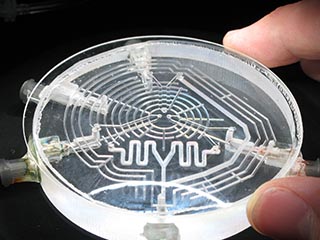Course Description
Students will learn about the use of biomaterials to create advanced diagnostic tools for detection of infectious and chronic diseases, restore insulin production to supplement lost pancreatic function in diabetes, provide cells with appropriate physical, mechanical, and biochemical cues to direct tissue regeneration, …
Students will learn about the use of biomaterials to create advanced diagnostic tools for detection of infectious and chronic diseases, restore insulin production to supplement lost pancreatic function in diabetes, provide cells with appropriate physical, mechanical, and biochemical cues to direct tissue regeneration, and enhance the efficacy of cancer immunotherapy.
This course is one of many Advanced Undergraduate Seminars offered by the Biology Department at MIT. These seminars are tailored for students with an interest in using primary research literature to discuss and learn about current biological research in a highly interactive setting. Many instructors of the Advanced Undergraduate Seminars are postdoctoral scientists with a strong interest in teaching.
Course Info
Instructors
Departments
Learning Resource Types









